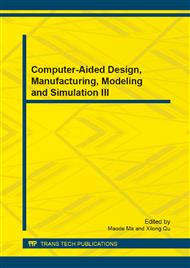p.517
p.521
p.526
p.531
p.535
p.541
p.546
p.551
p.556
Self-Adaptive Power Adjustment Routing Based on the Cognitive Radio Ad Hoc Network
Abstract:
There are usually energy holes caused by uneven energy consumption of transferring data in Cognitive Radio Ad Hoc Network (CRANH), which brings about many difficulties in various applications, as limit the network lifetime. To solve this problem, the major idea so far is based on the real-time routing mechanism. However, the method needs to cost extra energy for be routed again after transferring data, it can decrease network surviving lifetime. Hence, a self-adaptive power adjustment routing mechanism for Cognitive Radio Ad Hoc Network proposed in this paper. The algorithm can be minimum of network energy consumption of transferring data based on self-adaptive power adjustment technique can find different neighbor set to meet different power thresholds. Theoretically and experimentally, it is concluded that the proposed algorithm is able to decrease energy consumption and improve the network lifetime of CRANH.
Info:
Periodical:
Pages:
535-540
Citation:
Online since:
October 2013
Authors:
Keywords:
Price:
Сopyright:
© 2014 Trans Tech Publications Ltd. All Rights Reserved
Share:
Citation:


